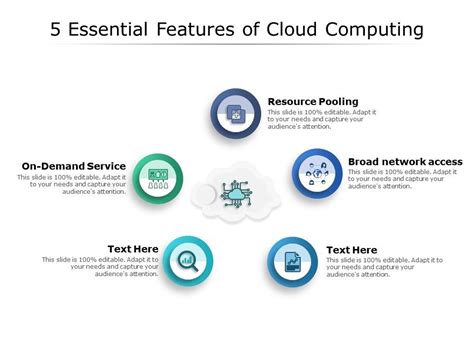In today's fast-paced business environment, making data-driven decisions is crucial for success. A tech dashboard is an essential tool that helps organizations make sense of their data and track key performance indicators (KPIs) in real-time. A well-designed dashboard provides a clear and concise overview of an organization's performance, enabling stakeholders to identify areas of improvement and make informed decisions.
The importance of a tech dashboard cannot be overstated. It serves as a central hub for data visualization, providing a unified view of an organization's data and facilitating collaboration among teams. With the help of a dashboard, organizations can streamline their operations, improve productivity, and drive growth.
So, what makes a tech dashboard effective? In this article, we will explore the 5 essential features of a tech dashboard that can help organizations get the most out of their data.

Feature #1: Customizable and Interactive Visualizations
A good tech dashboard should provide customizable and interactive visualizations that enable users to explore their data in a meaningful way. This feature allows users to create personalized dashboards that cater to their specific needs and preferences. With interactive visualizations, users can drill down into their data, analyze trends, and identify patterns that might not be immediately apparent.
Some key benefits of customizable and interactive visualizations include:
- Enhanced data exploration and analysis
- Improved user engagement and adoption
- Increased flexibility and adaptability
Examples of Customizable and Interactive Visualizations
- Drill-down charts and tables that enable users to access detailed data
- Interactive maps that display geographic data and trends
- Customizable filters and parameters that allow users to refine their data views

Feature #2: Real-Time Data and Alerts
A tech dashboard should provide real-time data and alerts that enable users to respond promptly to changes and trends in their data. This feature ensures that users are always up-to-date with the latest information, enabling them to make timely and informed decisions.
Some key benefits of real-time data and alerts include:
- Improved responsiveness and agility
- Enhanced decision-making and problem-solving
- Increased productivity and efficiency
Examples of Real-Time Data and Alerts
- Live updates and feeds that display the latest data and trends
- Customizable alerts and notifications that inform users of critical changes or events
- Real-time analytics and insights that enable users to respond promptly to emerging trends

Feature #3: Integration with Multiple Data Sources
A good tech dashboard should be able to integrate with multiple data sources, providing a unified view of an organization's data. This feature enables users to access all their data in one place, eliminating the need to switch between multiple applications and platforms.
Some key benefits of integrating multiple data sources include:
- Improved data consistency and accuracy
- Enhanced data analysis and insights
- Increased productivity and efficiency
Examples of Integrating Multiple Data Sources
- Integration with cloud-based applications and platforms
- Connectivity with on-premises data sources and systems
- Support for multiple data formats and protocols

Feature #4: Collaborative and Sharing Capabilities
A tech dashboard should provide collaborative and sharing capabilities that enable users to work together and share insights with stakeholders. This feature facilitates communication and collaboration among teams, ensuring that everyone is on the same page.
Some key benefits of collaborative and sharing capabilities include:
- Improved communication and collaboration among teams
- Enhanced decision-making and problem-solving
- Increased productivity and efficiency
Examples of Collaborative and Sharing Capabilities
- Real-time commenting and annotation tools that enable users to provide feedback and insights
- Customizable sharing and permission controls that allow users to share dashboards and data with stakeholders
- Integrated workflows and approval processes that facilitate collaboration and decision-making

Feature #5: Scalability and Flexibility
A good tech dashboard should be scalable and flexible, providing users with the ability to adapt and evolve their dashboard as their needs change. This feature ensures that the dashboard can grow and evolve with the organization, providing a long-term solution that meets the organization's changing needs.
Some key benefits of scalability and flexibility include:
- Improved adaptability and responsiveness to changing needs
- Enhanced ROI and cost-effectiveness
- Increased user satisfaction and adoption
Examples of Scalability and Flexibility
- Cloud-based deployment options that enable users to scale up or down as needed
- Modular and extensible architecture that allows users to add or remove features and functionality
- Support for multiple devices and platforms, including mobile and tablet devices





In conclusion, a tech dashboard is an essential tool for organizations that want to make data-driven decisions and drive growth. By incorporating the 5 essential features of a tech dashboard, organizations can create a powerful and effective dashboard that meets their unique needs and preferences. Whether you're looking to improve your data analysis, enhance your decision-making, or drive business growth, a well-designed dashboard can help you achieve your goals.
What is a tech dashboard?
+A tech dashboard is a visual representation of data and metrics that provides a unified view of an organization's performance.
What are the benefits of a tech dashboard?
+The benefits of a tech dashboard include improved data analysis, enhanced decision-making, and increased productivity and efficiency.
What are the essential features of a tech dashboard?
+The essential features of a tech dashboard include customizable and interactive visualizations, real-time data and alerts, integration with multiple data sources, collaborative and sharing capabilities, and scalability and flexibility.
